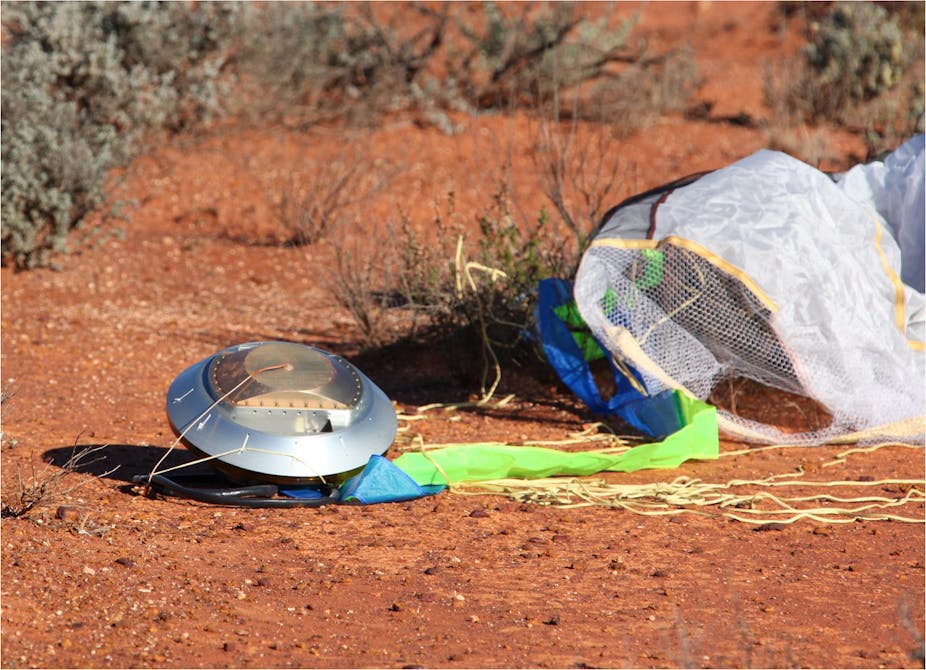Asteroid dust collected by a Japanese space capsule that landed in Woomera last year has been matched with samples of meteorites found on Earth, providing new clues about where meteorites came from.
The Japan Aerospace Exploration Agency’s Hayabusa returned to Earth in June last year after a seven-year, billion kilometre journey to an asteroid known as Itokawa, where it scooped up a tiny sample of dust from the celestial body’s surface.
The mission nearly collapsed when a special gun designed to blast dust from the asteroid’s skin into collection containers failed to go off. Fortunately, the impact of landing on the asteroid coated just enough dust onto the spacecraft to give the researchers a sample for analysis.
It is only the fourth time ever that extra-terrestrial samples have been collected and returned to Earth.
In a paper published in the journal Science, researchers report that samples of the asteroid dust match exactly meteorites found on Earth.
“One of the goals of the mission was to try and match up the S-type asteroids – the stony looking asteroids – with the equivalent parts of meteorites on Earth,” said report co-author Trevor Ireland, Professor of Earth Chemistry at the Australian National University and a member of the team that oversaw the project.
“There’s been various paradoxes about the different nature of asteroids to the meteorites we get on Earth but this asteroid matches up exactly with what we have here. The stony meteorites we pick up on Earth are sourced from these stony asteroids out in space.”
The dust also revealed that the Itokawa asteroid was much younger than first thought at around 10 million years old. By contrast, the Moon is billions of years old, said Professor Ireland.
“The samples show that the surface of that asteroid is very young and it’s been blasted out of place and then come into the inner solar system, all in the space of 10 million years,” he said.
“It illustrates how these bodies are raining in on us from the asteroid belt.”
More asteroid bodies are expected to be passing close to our planet over a long time frame, he said, potentially passing within 20,000 km of Earth or even colliding with it, he said.
“I think every million years we expect a one kilometre-sized object to strike the Earth, so it’s not a very frequent event. We haven’t seen one in human recorded history but if it does come, it may come with a nasty wallop,” said Professor Ireland.
“All of these things are showing us that things that we think are quite large and static in the sky are actually part of an ongoing evolution of material around us.”
The Japan Aerospace Exploration Agency, which plans to launch a second Hayabusa to collect more asteroid dust, should be congratulated for developing new technology to propel the unmanned craft, he said.
“It really does open up a new era of exploration.”

